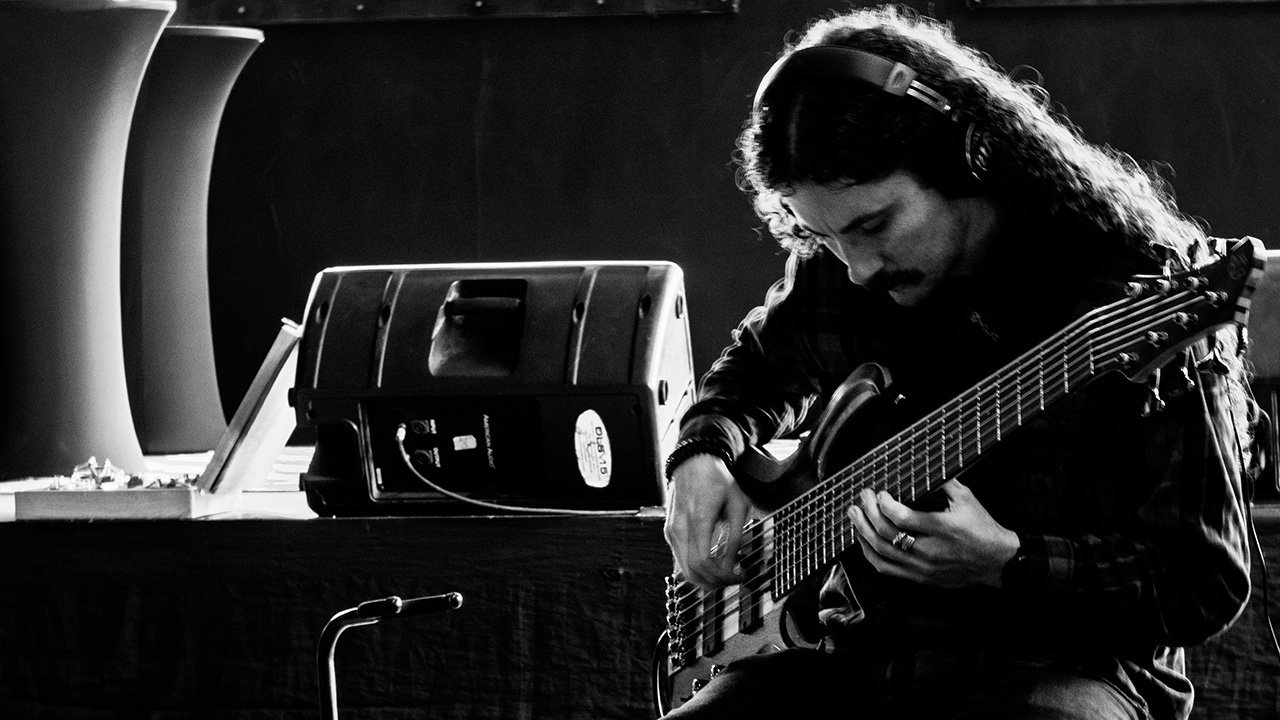“It’s a dialogue between the right hand and the left hand, with the right hand doing most of the talking!” Michael Manring explains the origins of his slap technique
How the world’s ‘leading solo bassist’ fused slap bass with the rhythmic studies of Indian music

Combining all manner of plucking, picking, slapping and tapping, Michael Manring’s exhilarating bass guitar displays merge some of the most innovative bass tones imaginable. While landmark compositions The Enormous Room and My Three Moons showcase the unorthodox tuning possibilities of his signature Zon Hyperbass, another area of Manring’s study has centred around rhythmically charged slapped and strummed passages, as heard on Helios, the opening track from his 2005 album, Soliloquy.
“I’ve been following a concept loosely based on how rhythm is studied in India, both in the north and the south,” Manring told BP. “There are two different traditions, the Hindustani and the Carnatic, but they have a lot of commonalities. In those cultures rhythm is taught by breaking down the basic strokes and then putting those into different combinations that work. I’m basically doing the same thing with the bass by looking at what strokes I want to work with and how those can be put together.
“I’ve broken it down into sets of strokes that I use with each finger and it seems to me that I’m using the same strokes whether it’s any of the fingers or the thumb, so it’s just a matter of putting all those things together. There’s definitely a left-hand component too, though it’s simpler, kind of like the left hand of the tabla. So it ends up being a kind of a dialogue between the right hand and the left hand, with the right hand doing most of the talking!”
Merging his unique conceptual awareness with breathtaking technique, Manring is able to combine all manner of percussive sounds, harmonics, and some very un-bass-like tones in his solo bass performances. “Like I said, I’ve tried to learn a lot from Indian music because there’s an incredible science that’s gone behind understanding the different ways you can inflect a note, move into a tone or move away from a tone or move between two tones.
“For instance, there are different positions along the length of the string that I can play in with my right hand. I can play back by the bridge, muting with the side of my hand, then I can move into a pizzicato position, or where the normal slap position is, and then all the way up on the fingerboard. Each position has different sets of strokes that are applicable, and then there are strokes that tend to go together and other strokes that don’t. Repeated strokes are usable but not necessarily in a combination where you’re trying to play faster, so you’re looking for a set of combinations that you can use as a building block.”
For Western musicians who have fallen under the spell of Indian music, these techniques are regarded as some of the most efficient ways of unlocking new rhythmic patterns and ideas. “When I’m practising I will sit down and try to focus on a very basic aspect of playing, but I’m not trying to solely use Indian ideas because I’m from Oakland, California! And I would never be able to play anything authentic: it wouldn’t make sense to me. I just try to figure out what I can draw from it. There’s just so much going on and I’ve still got a lot of work to do!”
Manring's 2020 solo album, Small Moments, is available to buy or stream.
All the latest guitar news, interviews, lessons, reviews, deals and more, direct to your inbox!

Nick Wells was the Editor of Bass Guitar magazine from 2009 to 2011, before making strides into the world of Artist Relations with Sheldon Dingwall and Dingwall Guitars. He's also the producer of bass-centric documentaries, Walking the Changes and Beneath the Bassline, as well as Production Manager and Artist Liaison for ScottsBassLessons. In his free time, you'll find him jumping around his bedroom to Kool & The Gang while hammering the life out of his P-Bass.
